
If you went to an American elementary school, chances are good that you have heard the story of the first Thanksgiving. For those who are unaware, the story goes like this. The “Pilgrims”, a small group of Puritans facing religious persecution in Britain, bravely set sail for the New World on a ship called the Mayflower. A down to earth, religious, and moral community, they staked out a settlement in Plymouth Massachusetts in 1620. All does not go well for the Pilgrims, at least in the beginning. Sadly, more than half die in during the first winter. But then, in a great act of eternal provenance, an Indian named Squanto appears with his tribe. Despite a shaky start, the two groups of people learn to cooperate, and the Indians teach the Pilgrims how to live off the land. That year the Pilgrims reap a bountiful harvest and hold a great feast of Thanksgiving with their new Indian friends. And there ends the Thanksgiving narrative, a story of reconciliation with nature and with fellow man.
The book 1491 by Christopher Mann tells another story of America. It is the story of advanced Indian[i] civilizations actively shaping their environments, of great architectural projects and political intrigues, of grand cities and ingenious technologies, all before the encounter. Mann states “Western Scholars have written histories of the world since at least the twelfth century”, sometimes “tipping their hats to non-western accomplishments in the sciences and the arts” (Mann 26). His goal: to give America a history of its own. His story seems completely different than the Thanksgiving narrative above. It is, or at least it tries to be, a “scientific history”. Characterized by its archaeological and anthropological evidence, the New York Times Book review writes of 1491 as “in the best scientific tradition, carefully sifting through evidence, never jumping to hasty conclusions”[ii]. It is easy to assume that the 1491 is objective in is its history, while that is unlikely for the Thanksgiving story. Yet the Thanksgiving narrative and 1491 prove to be surprisingly similar.
It all starts with the title, 1491. This may seem like an odd place to begin. 1491 is not 1620 after all. But the two dates perform a similar function in framing their respective stories. In 1491, the title sets parameters on the text. Mann directs his focus not on a post-1491 tragic narrative[iii], but on the growth of Indian societies before this date. Robin Stryker, writing on the use of time in narrative, argues that “Many of the temporally and specially bounded causal explanations constructed by historical-corporativists rely heavily on the notion of time as context”[iv] (Stryker 3). In respect to historical narrative, this indicates that the date 1491 helps shape the story the book chooses to tell. The narrative depends on temporal boundaries to establish its context. Thus, while 1491 includes evidence from the post-1491 era, and acknowledges the tragedy of the Indians fall in the beginning of the book, its primary focus is on the pre-Columbian world, one of prosperity and civilization.
The world of 1491 is full of achievement, achievement that very often draws parallels to that of Europe. There is Cahokia, “the greatest city north of the Rio Grande” “comparable in size to London, while on a landmass with Paris, Cordoba, or Rome” and whose citizens “invented every aspect of urban life for themselves” (Mann, 259). They built “grandiose construction projects”, a gigantic structure called Monks Mound, a “Slab of Clay about 900 feet long” that required significant breakthroughs in the engineering clay to construct soundly (260). As readers, we think of the great structures of the Old World for comparison.
1491 speaks of great political intrigues and battles, which also draw equivalencies to those in the Old World. The Maya civilization is a clear example. In Mann’s characterization, warring states and rivalries constantly vie for supremacy through intense dynastic rivalries. Between the two great city states of Mutal and Kann, there was an intense series of wars, a “strife that lasted 150 years, spread across the Maya heartland, and resulted in the pillage of a dozen city states” (245). It does not seem too much of a reach to draw parallels between this Maya struggle and the great Imperial Rivalries of Rome and Carthage, or Athens and Sparta. Mann does just this, proposing that the Maya lived in a world where “A sophisticated and widely shared culture flourished among perpetual division and conflict”, that “resembles many in the Old World-Classical Greece or Renaissance Italy” (271). Again, we see the comparative aspect of the novel at work. The New World becomes a mirror of the old.
These are far from the only examples of Mann’s parallelism between pre-Columbian America and the Old World. His characterization of an Inka secession crisis, where Inka King Thurpa Inka “selected one son but then changed his mind on his death bed and selected another…leading to a melee” (76) is not an unfamiliar story to the reader well acquainted with European history. Nor is it surprising that “among his first official acts was killing two of his own brothers to avoid future family problems” (76).
But none of these examples draw so explicit parallels as Mann’s description of the Iroquois Confederacy. Speaking on individual rights, Mann states “an overwhelming number [of proponents for individual rights] have been inspired by the American example—or as it should be perhaps be called, the Native American example” (330). It seems the Iroquois society was based upon “the consent of the governed” and other liberal ideals, and that “compared to despotic societies that were the norm…..Haudenosaunee was a libertarian’s dream” (332). In the same stream, he argues that “It [Iroquois society] was also a feminist dream” citing the fact that clans were “largely governed internally by female clan heads” and that “Indian insistence on personal liberty was accompanied by an equal insistence on social equality” (334). But he does not stop there. Mann goes on to suggest that “the Haudenosaunee exemplified the formidable tradition of limited government and personal autonomy shared by many cultures north of the Rio Grande” and that “the framers of the constitution….were pervaded by the Indian ideals and images of liberty” (333). So, Mann not only makes Indian and European-American societies look similar, but is directly linking them through a liberal political philosophy. He closes with a question to his non-Indian audience, “Imagine somehow meeting a member of the Haudenosaunee from 1491. Is it too much to speculate the beneath the swirling tattoos, asymmetrically trimmed hair, and bedizened robes, you would recognize someone much closer to yourself, at least in certain respects, than your own ancestors” (337)?
Mann clearly draws parallels between the societies of pre-Columbian America’s and those of Old World, framing history in such a way as to emphasize similarities, and not differences. But this way of telling the pre-Columbian narrative is not innately correct. In fact, it could be argued—and a great many Native American philosophers do—that this method of telling is profoundly incorrect. Marilyn Notah Verney, in American Indian Thought[v], brings up the notion that “We [Indigenous People] get lost in the everydayness of Euro-American culture (Others) and its philosophical framework” (Waters, 137). It seems that this idea is incompatible with an author such as Mann—who writes about Indian societies in a profoundly Euro-American framework—who implies, and even openly argues that there exist great cultural and philosophical similarities between these two societies. Whatever the case, it is essential to consider the parallels brought up in 1491 are subjective, a narrative choice which has an intended effect on the reader.
This effect becomes clear. 1491 implies a universality concerning humanity, a certain togetherness. The reader (more so if they are from the books Western audience) begins to see Pre-Columbian society as something similar, something relatable. Mann frequently proposes the idea that we not only can, but should stand to implement the ideas of Indian societies: “Native Americans ran the continent as they saw fit. Modern Nations must do the same” (326). Given the attempts to connect Western European ideals to those of the American Indians, a conclusion comes naturally. No group is inherently malevolent, not Western society, and not the pre-Columbian Indians. Different societies can learn from each other.
In effect, Mann is shifting the argument. Much as in the Thanksgiving story, the narrative is no longer European versus Indian. Instead, Mann clears room for what he believes to be the real issue, the relationship between man and nature. He sees pre-Colombian history as a lesson for the future. Not just a political lesson, but an environmental one. And like in the Thanksgiving Story, the settlers from Europe have something to learn about living off the land from the Indians.
Again, we return to the Mayans, who according to Mann, were environmental administrators. Living in a region with naturally toxic groundwater, they paved over their “geochemically hostile” landscape, creating a network of “artificially habitable terrestrial islands” (272). The Mayan people were far from the only society in the America to do manipulate their environments. Cahokia and its people diverted the Cahokia Creek both for the purposes of irrigation and to increase the ease with which lumber could be transported. The people of the Amazon embarked on a long-term transformation of the amazon rainforest, until a large portion of the trees bore edible fruits. It seems correct to say “Native Americans’ interactions with their environments were as diverse as Native Americans themselves” and that “Indians were superbly active land managers—they did not live lightly on the land” (248). Mann praises this idea of environmental management, pronouncing that modern nations should follow the Pre-Columbian civilizations, and “not set our sights on rebuilding an environment from the past but concentrate on shaping a world to live in for the future” (326). He is proposing that contemporary Amer-European society modifies its viewpoints, to achieve a reconciliation of identity and idea that could end up being its salvation.
So we find that the First Thanksgiving and 1491, while very different stories, are profoundly similar in narrative structure. In Metahistory, Hayden White identifies different models of historical narrative.[vi] In this case the most apt narrative style to describe both is that of a comedy. That is, Mann is telling the story of political intrigue and environmental management, of the building of great architecture, great cities, and complex philosophies. But more importantly, he is telling that story in a positive way. 1491 is a story glorifying pre-Columbian Indian society, and by likening it to the Old World, it is in effect glorifying both. Therefore, 1491 is a story in which everyone is portrayed in a similarly positive light. Thus, “Hope is held out for the temporary triumph of man over his world by the prospect of occasional reconciliations of the forces at play in the social and natural worlds” (White 9). There is the potential for reconciliation between the western world and the pre-Columbian one, between humankind and nature. Additionally, 1491 takes seriously the forces which “oppose the effort of human redemption”, while allowing the possibility for a “victory of man over the world of experience” (10). It tells of the difficulties of managing the environment, but gives explicit openings through which it can be managed in the future. It is not set in place that humankind will triumph, and Mann acknowledges these difficulties, but in the end the message of the book is positive and optimistic.
The interesting thing is, even with its time frame set, 1491 didn’t have to be a comedy. Many of the societies in the book collapse long before the encounter, not in small part due to the mismanagement of their environments. Both the Maya and the Cahokian cultures collapsed long before Columbus, for this very reason. Mann understands this, and does not believe that these collapses should be glossed over: “Grant the Maya the dignity of assigning them responsibility of their failures as well as their successes” he states (Mann 279). He could certainly draw the conclusion, with the same base of facts, that these attempts to manipulate the environment were travesties, that they are symptomatic of the failures of humankind, and that “man is ultimately a captive of the world rather than its master” (White 9). Nobody would be on the moral side, and the book would become far different.[vii] But Mann consistently sees these failures of as insignificant blips in the upward march of pre-Columbian Indian society. “Native Americans have been managing their environment for thousands of years”, he states (Mann 314). He presents the demise of Cahokia and the Maya as rare mistakes, and argues that “by and large they (the Indians) modified their environments in stable, supple and resilient ways” (314). It is not that this is a wrong way of writing the narrative of pre-Colombian societies, but that there is no objectively right way of writing about it, because it will always be just that, a narrative.
Despite being labeled as such, 1491 cannot be, nor should it necessarily try to be, a scientific history. By understanding 1491 as narrative—and a comedic one at that—the book becomes far more interesting. Understanding 1491, understanding history truly becomes a task of understanding how a story is told, and why it is told in that way. History is no longer just a chronological memorization of facts and names. Narrative gives history coherency; it certainly makes 1491 a stimulating read. In the end, it gives a renewed meaning to why so many of us learned the story of the first Thanksgiving all those years ago.
[i] Mann justifies the use of the word Indian, stating that “Every native person that I have met, I think without exception, has used “Indian” rather than “Native American”.
[ii] Baker, Kevin. “‘1491’: Vanished Americans – The New York Times.” The New York Times. October 9, 2009. Accessed November 13, 2016.
[iii] Eg: conquistadors and expanding white settlers drive back the disease weakened Indian tribes from their ancestral homelands. The Indians fight back valiantly but are defeated by a combination of trickery, numbers, and technology. One by one, all the great Indian nations submit, their cultures and people marginalized.
[iv] Stryker, R. “Beyond History Versus Theory: Strategic Narrative and Sociological Explanation.” Sociological Methods & Research 24, no. 3 (1996): 304-52. doi:10.1177/0049124196024003003
[v] Waters, Anne. American Indian Thought: Philosophical Essays. Malden, MA: Blackwell Pub., 2004.
[vi] White, Hayden V. Metahistory: The Historical Imagination in Nineteenth-century Europe. Baltimore: Johns Hopkins University Press, 1973.
[vii] Under Hayden White’s distinctions, this would be indicative of a satirical narrative




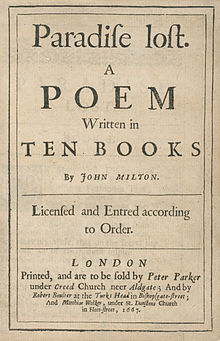
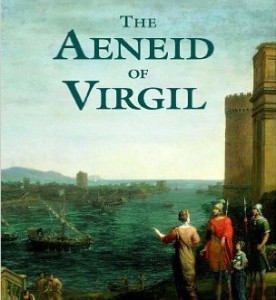 Fifth century grammarian Tiberius Claudius Donatus didn’t think highly of his son’s teachers. These instructors, he complained, were barely scratching the surface of the most eminent of Roman classics: Vergil’s Aeneid, the epic poem that chronicles the events leading up to Rome’s founding. So Donatus set out to write the commentary Interpretationes Vergilianae, attempting to prove that every line in the poem praises the emperor Augustus. Aeneas, the epic’s hero, was widely interpreted as the literary embodiment of Augustus. As long as the poem spoke only highly of Aeneas, Donatus’s task would be easy.
Fifth century grammarian Tiberius Claudius Donatus didn’t think highly of his son’s teachers. These instructors, he complained, were barely scratching the surface of the most eminent of Roman classics: Vergil’s Aeneid, the epic poem that chronicles the events leading up to Rome’s founding. So Donatus set out to write the commentary Interpretationes Vergilianae, attempting to prove that every line in the poem praises the emperor Augustus. Aeneas, the epic’s hero, was widely interpreted as the literary embodiment of Augustus. As long as the poem spoke only highly of Aeneas, Donatus’s task would be easy.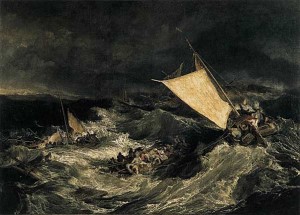 Donatus had asserted that Aeneas was semi-divine and thus “devoid of every fault,” unaffected by the fears and urges of mere mortals (
Donatus had asserted that Aeneas was semi-divine and thus “devoid of every fault,” unaffected by the fears and urges of mere mortals (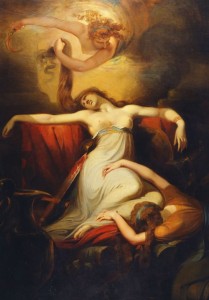 While his bravery disappoints in this case, at other times his judgement and perception are what fail him. When Aeneas escapes the storm and lands in Carthage, he seduces the Carthaginian queen Dido and moves into the palace with her; she believes they are married. Then the gods order him to continue his journey. Aeneas handles the situation terribly, initially hiding his departure from Dido and then justifying himself with the impersonal argument, “It is right for us too to search out a foreign kingdom” (IV. 50). She, despairing, asks him point-blank, “Does my love not hold you, nor my pledge I once gave you, nor the promise that Dido will die a cruel death?” (IV. 307-308, emphasis added). Later, when Aeneas meets her in the Underworld after she has committed suicide, he has the audacity to say, “Alas, was I the cause of your dying?… I did not think my leaving there would ever bring such grief to you” (VI. 457, 462-463). He is either lying through his teeth or had truly been an imperceptive fool. Then, while back on the open ocean, personified Sleep bewitches his helmsman Palinurus and throws him overboard. When Aeneas realizes his helmsman has been lost, he laments, “Oh, far too trusting of the calm sea, and the sky, you’ll lie naked, Palinurus, on an unknown shore” (V. 870-871). Once again, Aeneas has completely misread the situation. His friend had not trusted the sea; he had resisted Sleep, saying, “Do you tell me to trust the sea’s placid face…I whom a clear sky has deceived so often?” (V. 48, 51). Aeneas knows that the gods have been harassing his crew throughout the journey; why, then, is he so quick to blame his helmsman?
While his bravery disappoints in this case, at other times his judgement and perception are what fail him. When Aeneas escapes the storm and lands in Carthage, he seduces the Carthaginian queen Dido and moves into the palace with her; she believes they are married. Then the gods order him to continue his journey. Aeneas handles the situation terribly, initially hiding his departure from Dido and then justifying himself with the impersonal argument, “It is right for us too to search out a foreign kingdom” (IV. 50). She, despairing, asks him point-blank, “Does my love not hold you, nor my pledge I once gave you, nor the promise that Dido will die a cruel death?” (IV. 307-308, emphasis added). Later, when Aeneas meets her in the Underworld after she has committed suicide, he has the audacity to say, “Alas, was I the cause of your dying?… I did not think my leaving there would ever bring such grief to you” (VI. 457, 462-463). He is either lying through his teeth or had truly been an imperceptive fool. Then, while back on the open ocean, personified Sleep bewitches his helmsman Palinurus and throws him overboard. When Aeneas realizes his helmsman has been lost, he laments, “Oh, far too trusting of the calm sea, and the sky, you’ll lie naked, Palinurus, on an unknown shore” (V. 870-871). Once again, Aeneas has completely misread the situation. His friend had not trusted the sea; he had resisted Sleep, saying, “Do you tell me to trust the sea’s placid face…I whom a clear sky has deceived so often?” (V. 48, 51). Aeneas knows that the gods have been harassing his crew throughout the journey; why, then, is he so quick to blame his helmsman?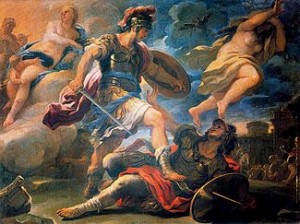 The text even mentioned Anchises, as if to remind Aeneas of his father’s former advice. Turnus has lowered his eyes “in submission” and stretched out his hands “in defeat”: he is the epitome of a conquered, humbled man. Aeneas, however, does not spare the defeated. He notices his friend Pallas’s belt on Turnus’s waist, and, “blazing with fury,” stabs him to death (XII. 946).
The text even mentioned Anchises, as if to remind Aeneas of his father’s former advice. Turnus has lowered his eyes “in submission” and stretched out his hands “in defeat”: he is the epitome of a conquered, humbled man. Aeneas, however, does not spare the defeated. He notices his friend Pallas’s belt on Turnus’s waist, and, “blazing with fury,” stabs him to death (XII. 946).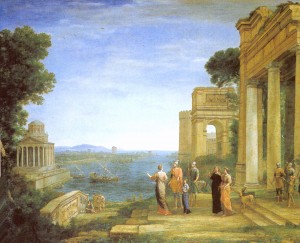 What is so noteworthy about this opening is that Carthage is not just any city, but Rome’s archenemy, its rival in three costly Punic Wars. Rather than vilifying Carthage, however, the city is held up as the goddess’s favored place: she had even chosen to keep her prized possessions there. Romans, on the other hand—“the offspring derived from Trojan blood”—were the conquerors who would despoil a goddess’s most sacred city. This passage does not just demote Rome as unimportant compared to Carthage; it vilifies Rome.
What is so noteworthy about this opening is that Carthage is not just any city, but Rome’s archenemy, its rival in three costly Punic Wars. Rather than vilifying Carthage, however, the city is held up as the goddess’s favored place: she had even chosen to keep her prized possessions there. Romans, on the other hand—“the offspring derived from Trojan blood”—were the conquerors who would despoil a goddess’s most sacred city. This passage does not just demote Rome as unimportant compared to Carthage; it vilifies Rome.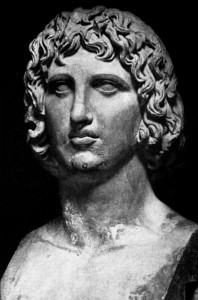 We know that Augustus and Vergil were fairly close acquaintances. We know that in Vergil’s Georgics, published ten years before the Aeneid, he had written, “Soon I’ll prepare myself to speak of [Augustus] Caesar’s fiery battles, and take his name forward, famous” (III. 47). We also know that Vergil was watching Augustus amass more and more power during those ten years. Conspiracy theorists point out that in 19 BCE, right after Vergil had finished his draft of the Aeneid, he took a trip to Greece, the place Roman authors went when they wanted to leave town for a while. On the way, he coincidentally ran into Augustus, and Vergil grew ill and died the next day. (Augustus loved to use poison to dispatch his enemies.) Vergil had asked in his will for the Aeneid to be burned: was this because he hadn’t put his finishing touches on the poem or because he could no longer bear to publish a work that would serve as propaganda?
We know that Augustus and Vergil were fairly close acquaintances. We know that in Vergil’s Georgics, published ten years before the Aeneid, he had written, “Soon I’ll prepare myself to speak of [Augustus] Caesar’s fiery battles, and take his name forward, famous” (III. 47). We also know that Vergil was watching Augustus amass more and more power during those ten years. Conspiracy theorists point out that in 19 BCE, right after Vergil had finished his draft of the Aeneid, he took a trip to Greece, the place Roman authors went when they wanted to leave town for a while. On the way, he coincidentally ran into Augustus, and Vergil grew ill and died the next day. (Augustus loved to use poison to dispatch his enemies.) Vergil had asked in his will for the Aeneid to be burned: was this because he hadn’t put his finishing touches on the poem or because he could no longer bear to publish a work that would serve as propaganda?